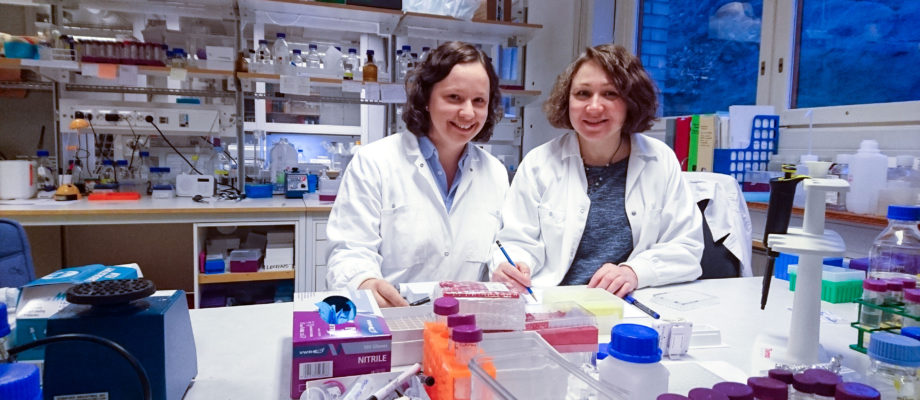GRANTS. The Assar Gabrielssons Foundation Fund provides more than SEK 4.5 million to 104 projects promoting cancer research. The vast majority of the researchers are associated with the University of Gothenburg. Two of the projects receiving funding are being carried out by Niclas Karlsson’s team at Medicinareberget.
“I’m delighted!” That was the reaction of Barbara Adamczyk, who had just been notified that the Foundation is going to support her research on stomach cancer.
She will use the money to test new approaches in her efforts to examine structural changes of glycones in samples from stomach cancer patients. In her work, Adamczyk compares glycone structures from cancerous tissue with adjacent healthy tissue. The tissue samples have been sent to her lab from one of the participants in the EU project GastricGlycoExplorer.
“I have extremely promising results for the first set of samples. In tissues from 10 stomach cancer patients, I see a clear difference between cancer tissue and healthy tissue from the same patient. The changes I’ve observed are partly in the amount of different types of glycones and partly which glycones can be detected in the tissue samples.”
Barbara Adamczyk has just begun working on the project’s big challenge: taking the analysis to the next step and conducting large-scale glycone analyses of 200 patient samples.
In the second cancer research project in Niclas Karlsson’s group, Varvara Vitiazeva will receive funding for her research on ovarian cancer.
“Today women with ovarian cancer are diagnosed too late,” she explains. “Through my work I want to discover markers that make it possible to diagnose ovarian cancer as early as possible and thereby improve the survival rate for many women.”
Vitiazeva currently is testing use of an antibody-based method for detecting mucins (large glycosylated proteins) in plasma from patients with ovarian cancer. Due to its high sensitivity, the method can detect the presence of mucins even if the sample has a low concentration of the molecules. The mucins being investigated do not exist in the plasma of healthy people. The idea is that some of the mucins can be used as new biomarkers for ovarian cancer in the future.
“I am grateful and pleased that the Foundation wants to support my work,” Vitiazeva concludes.
TEXT AND PHOTO: JESSICA ÖRNROS
Full list of GU researchers that received funding from the fund: https://gubox.box.com/s/elj6hagp8i5wozvdclwftbgd6xgmzx57











